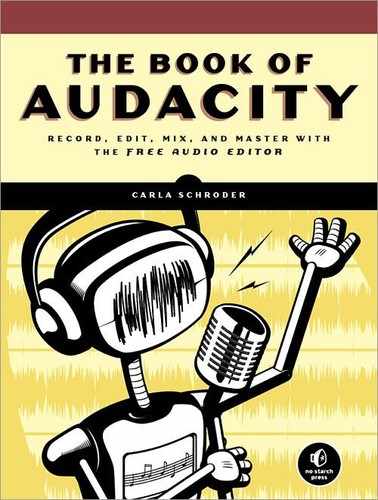If you like the convenience of a USB audio interface, you might, also consider FireWire devices. How do you choose between FireWire or USB? USB devices usually cost less than FireWire, but the trade-off is you may get poorer performance because of the differences in the two protocols.
All FireWire interfaces have special controller chips, so they do not add any extra load to your computer’s CPU. FireWire is a peer protocol, which means FireWire devices negotiate bus conflicts without using host CPU cycles. FireWire gives you two operating modes to choose from: asynchronous or isynchronous. Isynchronous mode means a device can reserve a certain portion of bandwidth all for itself that no other devices can use. So there are no collisions, which translates into high sustained throughput.
If your PC doesn’t have a FireWire interface, it’s easy to add one. PCI FireWire interfaces cost about $50, and many laptops include a FireWire port. When you’re shopping for FireWire audio interfaces, be sure to check for hardware compatibility. As one example, the Presonus FP10 has known conflicts with certain video chipsets, and it has a limited set of FireWire interfaces that it is known to work well with.
USB operates only in asynchronous mode. Asynchronous means that any device on the same bus can send data whenever it wants to, so sometimes there are collisions, which cause latency. USB is host-dependent and puts a load on the CPU, which can also cause latency. Latency is the enemy of quality audio.
You’ll see a lot of USB audio devices that still use USB 1.1. USB 1.1 has two speeds: 1.5Mbps and 12Mbps. The latter is also called full-speed. It’s unlikely that a USB recording interface will be geared down to 1.5Mbps. The number of channels you can record at once depends on the quality level you want to record at. CD quality, two channels at 16/44.1, has a bitrate of 1,411,200Mbps. Two channels at 24/96 equals a bitrate of 4,608,000Mbps, so it seems you could record four 24/96 channels at once. However, that 12Mbps maximum is theoretical, and your real-world throughput will be half that or less. Most likely you’ll be limited to two-channel 24/96 recording at best. Four channels at 16/44.1 or 24/48 are possible if you are careful and have a good, fast multicore PC and have it tuned for audio production. (See Bitrate, Bit Depth, and File Size in Bitrate, Bit Depth, and File Size to learn about different bitrates.)
USB 2.0 audio devices require careful shopping, because many of them are not USB class-compliant and instead supply their own special drivers. Even Windows users have to do their homework because vendors are slow to release drivers for new Windows releases. Mac support is decent overall, and Linux, Unix, and users on other platforms are at the back of the bus as usual. Some multitrack USB 2.0 devices are getting good reviews. For example, the M-Audio Fast Track Ultra 8R (eight in, eight out) gets high marks and works on Mac, Linux, and Windows.
